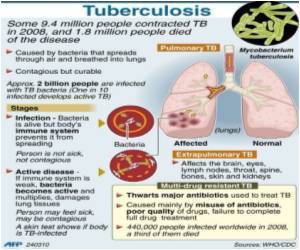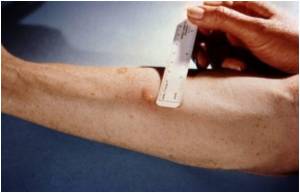In mice, the outcome of tuberculosis infection is influenced by how quickly bacteria-fighting T cells can get to the lungs.

Previous research has shown that ridding the body of the hindering T cells—known as regulatory T cells—enhances the body's ability to fight off TB-causing bacteria. But exactly when and where regulatory T cells act was uncertain. The new study shows that these cells are activated at the same time and place as their bacteria-fighting "effector" cell counterparts. In response to infection, both populations expand in the lymph nodes that drain the lung. As a result, fewer effector T cells become activated and are dispatched to the lungs to fight the bug.
Others have shown that the most deadly strains of TB generate the most regulatory T cells, suggesting that this may be a tactic used by the bacteria to sidestep immune attack. Whether clinicians can devise a strategy to interfere with these troublesome cells in humans remains to be seen.
Source-Eurekalert









